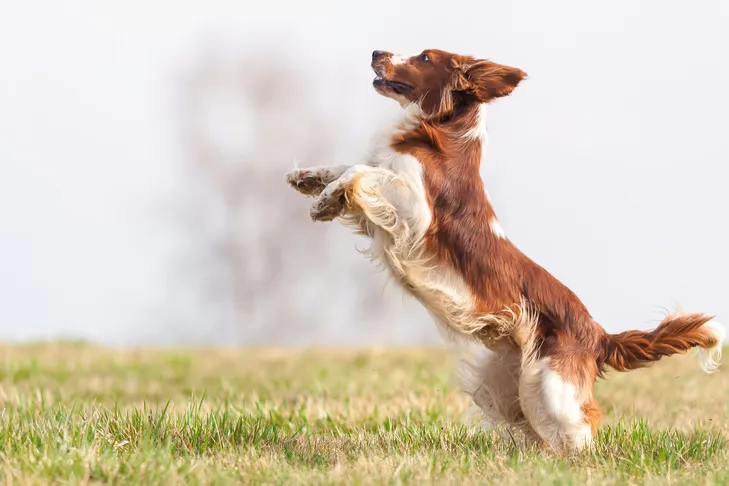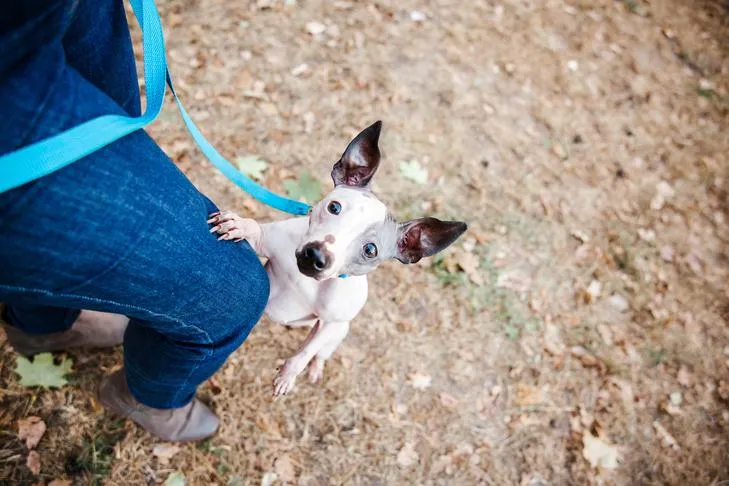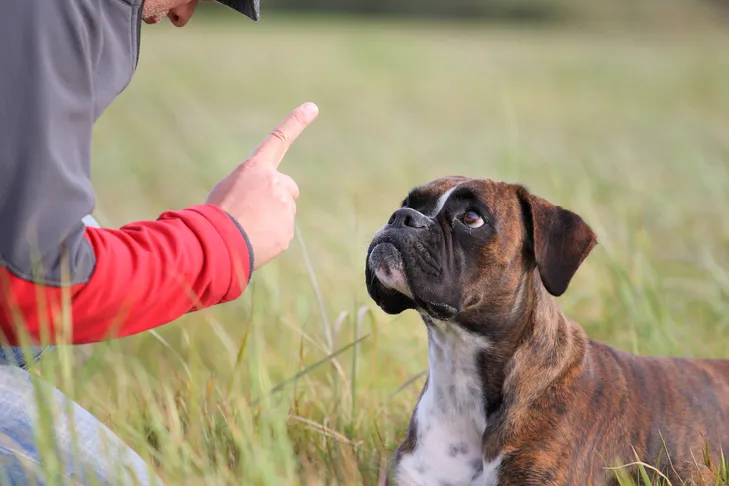Few things are as heartwarming as the exuberant greeting of a puppy, yet when that excitement manifests as jumping up, it quickly becomes a challenging behavior. While your puppy is simply trying to say “hello” and get your attention face-to-face, jumping can be annoying, uncomfortable, and even dangerous, especially for children, seniors, or if your puppy is a larger breed. Even small puppies can leave scratches or muddy paw prints. The good news is that this common puppy behavior problem can be effectively managed with consistent training.
To successfully how to stop your puppy from jumping up on you requires teaching your furry friend an alternative, more polite way to greet. This involves clear communication, consistency, and positive reinforcement. Instead of merely telling your puppy what not to do, the goal is to teach them what to do instead, like keeping their four paws on the floor or offering a sit. These proven training techniques will guide you in fostering appropriate greeting manners, ensuring your puppy knows exactly how to politely welcome you and your guests.
1. Only Reward Calm Greetings with Four Paws on the Floor
The most effective method for addressing unwanted behaviors like jumping is to teach an incompatible alternative. Your puppy will learn much faster if you show them the desired action instead of just preventing the undesirable one. For jumping, this means teaching your puppy to keep all four paws on the floor. A puppy cannot jump and stand calmly at the same time. Alternatively, you might decide you want your puppy to sit or lie down for greetings. Whatever your chosen rule, it’s crucial to only offer attention, praise, or petting when your puppy is following that rule. Consistency is key; avoid sending mixed signals by allowing jumping in some situations (e.g., when you’re wearing old clothes) but not others (e.g., when you’re dressed up).
2. Provide Immediate Attention When Your Puppy’s Front Feet Are Down
Puppies, like all dogs, are more likely to repeat behaviors that earn them a desired outcome. Since your puppy is jumping to gain your attention, it’s vital to provide that attention immediately when they comply with your greeting rule, such as having all four feet on the floor. As soon as your puppy performs the correct behavior, offer praise, gentle petting, or a quiet verbal affirmation. Don’t delay your greeting by focusing on other tasks like taking off your coat or shoes. Even a short delay can cause your puppy to become impatient and revert to jumping as an attempt to get you to notice them. Swiftly rewarding the right behavior reinforces the association directly and helps your puppy understand what you want.
3. Remove All Attention When Your Puppy Jumps
Conversely, the only way to eliminate jumping is to stop rewarding it. Never reinforce a behavior you wish to extinguish. If your puppy jumps on you, immediately remove the reward they seek: your attention. This can be done by calmly turning your back, stepping away, or even walking into another room. Your puppy will quickly learn that jumping results in the loss of your attention, achieving the opposite effect of what they intended. The moment your puppy’s four paws are back on the floor, turn back and quietly praise or pet them. This consistent on-off switch for your attention will clearly communicate to your puppy which behaviors are acceptable and which are not.
 A lively Welsh Springer Spaniel puppy excitedly jumping up on its owner outdoors during a training session.
A lively Welsh Springer Spaniel puppy excitedly jumping up on its owner outdoors during a training session.
4. Set Your Puppy Up for Success with Clear Cues
While ignoring jumping and rewarding proper greetings is effective, it can involve trial-and-error, which might be frustrating for your puppy. You can accelerate their learning by proactively setting them up for success. If your greeting rule is for your puppy to sit, ask them to sit as soon as you enter the door. If you require “four on the floor,” encourage them to stay standing calmly.
A fantastic strategy to prevent jumping is to scatter small, high-value treats on the floor as you arrive. Most puppies can’t resist free goodies, and they can’t jump while sniffing and eating treats off the ground. You’ll need to be quick; by providing food before your puppy even considers jumping, you reward “four on the floor” with both attention and treats. Your puppy will quickly grasp the connection, and you can gradually phase out the food rewards as the desired greeting behavior becomes established. For more structured training, consider teaching your puppy some good tricks to teach a puppy to channel their energy positively.
5. Consistently Reward Proper Greeting Behavior Every Time
For your puppy to quickly learn appropriate greeting behavior, their actions must consistently influence your attention: “four on the floor” earns attention, while jumping makes it disappear. This means you must always reward your puppy when they follow your greeting rule, without exception. Even if you’re feeling irritated after a bout of persistent jumping, never withhold your attention when your puppy finally brings their feet down. Inconsistency will confuse your puppy and hinder their learning process, making it seem as if the rule is arbitrary rather than a firm boundary. Your consistent response is vital for their understanding and progress.
6. Avoid Physical Correction: Don’t Grab or Push Your Puppy
Remember that your puppy jumps primarily to gain your attention. Any form of physical interaction, even if negative, such as grabbing their paws, holding them down, or pushing them away, can still be interpreted as attention. Instead of reducing jumping, these actions might inadvertently reward the behavior, potentially increasing its frequency in the long run. Worse still, for many puppies, getting physical can be misinterpreted as an invitation to engage in roughhouse play, causing them to return with more vigorous jumping, thinking it’s all part of an exciting game. This can lead to your puppy not understanding appropriate physical boundaries and escalating their attempts to engage you.
 An energetic American Hairless Terrier puppy playfully jumping up on its owner's leg in a park setting.
An energetic American Hairless Terrier puppy playfully jumping up on its owner's leg in a park setting.
7. Never Use Your Knee to Block a Jumping Puppy
You might have encountered advice suggesting that raising your knee to block your puppy’s chest as they jump will deter the behavior. However, as with other physical corrections, some boisterous puppies may interpret this as a form of attention or a wrestling game, leading to the opposite of the intended effect. More concerningly, for most puppies, this action can erode trust and damage the human-canine bond. Your puppy is simply trying to greet you, and responding with a physical block can feel like punishment, potentially causing distrust and fear. Such actions could even cause injury. A loss of trust can manifest in other behavioral challenges, making it harder to teach essential commands like teaching your puppy not to pull on the leash or coming when called.
8. Keep Greetings Low-Key During the Learning Phase
Puppies often struggle to control their excitement when greeting beloved humans. It requires significant emotional self-control for them to resist the natural urge to jump and instead follow a new greeting rule. You can make this easier for your puppy by keeping greetings low-key. Puppies are adept at reading our emotions, so if you are highly energetic and excitable, they will mirror that enthusiasm. Instead, strive to remain calm and quiet when you first greet them, even when offering praise. As your puppy begins to consistently grasp the polite greeting, you can gradually increase your enthusiasm, bit by bit, until you can match their joy without triggering unwanted jumping.
9. Prevent Your Puppy From Jumping on Guests
Your puppy’s behavior isn’t only reinforced by you; other family members, guests, and even strangers can inadvertently reward jumping if you’re not proactive. To prevent this, implement management techniques. For instance, keep your puppy on a leash when guests arrive so you can gently guide them away or step on the leash to keep their paws on the ground. Even better, teach your puppy a “place” command, sending them to a mat or bed, or use their crate so they are separated from the door area during initial greetings. A baby gate can also effectively block off the entrance hall, preventing direct access to guests. For specific guidance on this, learn how to stop your puppy from jumping on visitors.
 A well-behaved Boxer puppy calmly laying down on the grass while being trained by a man, demonstrating successful polite greeting behavior.
A well-behaved Boxer puppy calmly laying down on the grass while being trained by a man, demonstrating successful polite greeting behavior.
10. Clearly Communicate Your Greeting Rules to Guests and Strangers
Don’t hesitate to clearly communicate your puppy’s greeting rules to guests and even strangers you encounter. While your puppy is still learning, politely ask people to completely ignore your puppy until you give the signal that it’s okay to interact. It’s often best to avoid interactions with strangers entirely until your puppy has mastered polite greetings with friends and family members who you know will cooperate with your training methods. When a stranger approaches, use a “watch me” cue to divert your puppy’s attention or distract them with a hand touch game or a favorite toy until the person has passed. Consistently reinforcing these boundaries helps your puppy understand that polite greetings are expected from everyone. Incorporating amazing tricks to teach your puppy can also help redirect their energy positively during social interactions.
Training your puppy to stop jumping up on you is a journey that requires patience, consistency, and a positive approach. By implementing these 10 tips, you’re not just stopping an undesirable behavior; you’re teaching your puppy invaluable self-control and polite manners that will benefit them throughout their lives. Remember, your puppy wants to please you, and with clear guidance, they will learn to offer calm and respectful greetings. For more expert advice and to explore other training challenges, visit Dog Care Story – your trusted resource for comprehensive dog training solutions.
